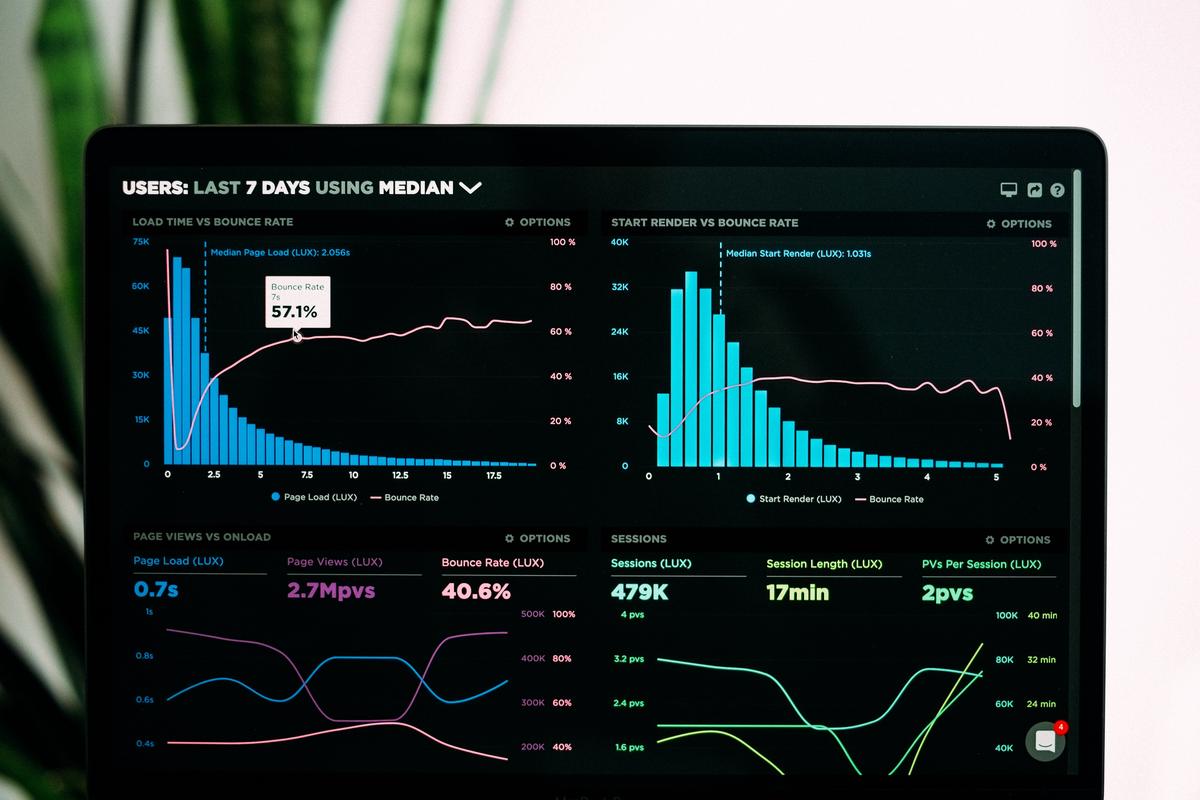Welcome to the world of search engine optimization, a vital digital marketing strategy that aims to increase your website’s visibility in the organic search results of search engines. Understanding the fundamentals of SEO is both necessary and rewarding for anyone involved in digital marketing or anyone wanting to establish a prominent online presence. This guide is designed for the general public and delves into the basics of SEO, introduces key techniques, underscores the significance of mobile and local SEO, unveils the essence of SEO analytics, and finally, guides on aligning your practices to the best SEO standards for sustainable benefits.
Understanding the Basics of SEO
What is SEO?
Search Engine Optimization, commonly abbreviated as SEO, is the practice of increasing the quantity and quality of traffic to your website through organic search engine results. In simpler terms, it involves making certain changes to your website design and content to make your site more attractive to a search engine.
The Importance of SEO
Why is SEO important, you may ask? Effective SEO practices make your website more comprehensible for search engines which helps your website rank higher, providing more visibility for your website. In turn, this leads to more opportunity to convert prospective visitors into customers.
Understanding How Search Engines Work
The basis of SEO lies in understanding how search engines like Google function. These search engines use robots to crawl the internet, going from site to site, collecting information about those sites, and putting them in an index. This index is then processed through an algorithm that tries to match all that data with your query.
Organic vs. Paid Search Results
When SEO is discussed, you will often hear about organic and paid search results. Organic search results are defined as results that are earned through effective SEO, not paid advertising, while paid search results are basically advertisements. These are the results show at the top or bottom of a search engine’s results page, and they will have a small ‘Ad’ icon nearby.
Types of SEO
Today, SEO can be categorized into three main types, each serving different aspects of optimization. These categories are On-page SEO, Off-page SEO, and Technical SEO.
On-page SEO concerns all Google’s ranking factors that are determined by directly looking at the page you try to optimize, including content quality, long-tail keywords, meta descriptions, etc.
Off-page SEO refers to all variables Google takes a look at, which are not exclusively in your hands. They depend on other sources, like social networks, other blogs in your industry, and the personal history of the searcher.
Finally, Technical SEO refers to the backend details of your website, such as site speed, mobile compatibility, site architecture, etc. This type of SEO focuses on how well search engine spiders can crawl your site and index your content.
To get the most out of search engine optimization (SEO), one must have a firm grasp on the various aspects it encompasses. If you’re a newcomer to the realm of SEO, turning to a reliable and well-rounded guide that provides a comprehensive understanding and productive tips for enhancing SEO can be an excellent starting point.

Key SEO Techniques
The Significant Part that Keyword Research Plays in SEO
Keyword research is an incredibly critical component driving the success of an SEO approach. This aspect involves determining the exact words and phrases that potential clients might use in search engines when they are in search of products, services, or content that resembles what your company provides. Recognizing these keywords offers a chance to weave them into the content on your website, thus boosting visibility and attracting web traffic. Besides the primary keywords, there’s also the advantage of capitalizing on long-tail keywords –these are highly specific phrases that users might resort to when searching.
On-Page and Off-Page SEO
On-page SEO refers to all tactics implemented directly on a website to improve its position in search rankings. This not only includes content with strategically placed keywords, but also meta tags, URLs, and alt text for images. Meta tags are snippets of text that describe a page’s content to the search engine, while a clean and SEO-optimized URL aids in page ranking. Alt text, on the other hand, is used to describe images to search engines and improve accessibility.
Off-page SEO encompasses all the techniques employed outside of your own website to impact your rankings within search engine results pages (SERPs). This predominantly involves link building, often achieved through content marketing or partnerships with other websites. These backlinks signal to search engines that your content is valuable and should rank higher.
Link Building – A Valuable Off-Page SEO Technique
Link building is one of the most important aspects of off-page SEO. It involves acquiring hyperlinks from other websites to your own. A hyperlink (usually just called a link) is a way for users to navigate directly from one web page to another. The more reputable sites you have linking back to your site, the more credibility that a search engine assigns to your page, leading to a higher ranking.
Understanding SEO Tools
SEO tools are software platforms designed to help SEO professionals track and improve their website’s ranking on search engine results pages. They provide data on backlinks, keyword rankings, on-page SEO, and much more. They also help you discover new opportunities for optimizing your site based on the behavior of your site visitors. Examples of popular SEO tools include Google Analytics, SEMrush, and Ahrefs.
A Layman’s Guide to Search Engine Optimization
Understanding the nuances of search engine optimization begins with comprehending the vital elements of a webpage. Each component plays an integral role in its ranking to search engines and users. For instance, a meta description provides a snapshot of the webpage’s content, giving a crucial insight into what the viewer can expect. Similarly, title tags should be a concise summarization of the page’s main content, ideally inclusive of relevant keywords.
Crucially, the structure of the webpage’s URL is another factor that significantly impacts SEO. The clearer and simpler it is, the easier it is for search engines to index, especially if it includes a keyword. Images on the webpage should also be supplied with alt text, which assists search engines in understanding the image’s content. This in turn, contributes to enhancing the overall ranking of the webpage.
Armed with this knowledge of the fundamental SEO techniques, you are primed to significantly elevate the visibility of your website in search engines, consequently optimizing your site’s performance.

Photo by lukechesser on Unsplash
Mobile SEO and Local SEO
Grasping the Concept of Mobile SEO
The next phase of upgrading your knowledge is to understand the importance of Mobile SEO, an acronym for Mobile Search Engine Optimization. This technique focuses on refining your website for optimal usage on smartphones and tablets. With the majority of internet users now accessing the internet through their mobile devices, having a mobile-friendly website is essential. More specifically, Google leverages mobile-friendliness as a variable when ranking websites, meaning a site that isn’t optimized for mobile usage could face negative consequences on the SERPs (Search Engine Results Pages).
To create a mobile-friendly website, you need to ensure it has a responsive design that automatically adjusts to various screen sizes. Additionally, fast loading speeds and effortless navigation on smaller screens are crucial elements to consider.
The Importance of Mobile Friendly Websites
A mobile-friendly website contributes to better SEO rankings for a few reasons. Firstly, in 2018, Google rolled out their mobile-first indexing, which means Google predominantly uses a website’s mobile version for indexing and ranking. Hence, if your content and layout are not as accessible on mobile as they are on desktop, your site’s search engine visibility could be negatively impacted.
Secondly, user experience is a large part of Google’s SEO ranking factors. Sites that don’t function well on mobile lead to high bounce rates (when people leave a site after only viewing one page), which negatively impacts SEO.
Delving Into Local SEO
Local SEO is a type of search engine optimization that helps businesses promote their products and services to local customers when they’re looking for them online. This marketing strategy is important because it helps your business become visible to people who are searching for a business like yours in their area.
Google and other search engines use location data to provide the most relevant search results. Therefore, if a website is adequately optimized for local SEO, it’s more likely to appear in search results when people in the same geographic location make a query related to its products or services.
Effective tactics for improving local SEO include creating or claiming your Google My Business listing, incorporating local keywords into your website content, earning positive reviews on Google and other review platforms, and cultivating local backlinks from reputable sources.
How Local SEO Bolsters Website Traffic and Relevance
The power of local SEO lies in its ability to notably increase the traffic directed to your website, while also enhancing its relevance to those using the search engine. Using local SEO strategies enables businesses to boost their exposure among users within their geographical corridors. This boost not only augments the chances of turning local users into actual customers, but it also escalates the brand’s prominence in local search results. Furthermore, local SEO can help smaller businesses compete more effectively with larger counterparts by prioritizing their visibility within local map search results.

Understanding SEO Analytics
Decoding SEO Analytics and Understanding Key Metrics
SEO analytics is the process of tracking and deciphering data from your website with an objective to enhance its optimization for search engines. Notable tools, such as Google Analytics, offer an in-depth look into the performance of your website by highlighting crucial data points, allowing you to monitor essential SEO metrics.
Overview: Traffic Metrics
Traffic metrics, also referred to as visitor metrics, play a significant role in SEO performance. Increased website traffic is often a sign of successful SEO efforts. Google Analytics provides several subsets of traffic data, such as direct (visitors who typed your URL directly into their browser), referral (who’ve visited your page via external links), organic (arrived through search engine results), and social (arrived via social media links). These subsets enable you to understand the sources of your traffic and direct your SEO efforts more effectively.
Significance: Backlinks
Backlinks are another crucial part of SEO, representing inbound links from other websites to your own. Each link acts as a vote of confidence as it suggests your content is valuable or relevant to other sources. Moreover, the quantity and quality of these backlinks affect your website’s authority, ultimately influencing your ranking on search engine results pages (SERPs). There are several tools available, like Google Search Console and Ahrefs, used to analyze your backlinks.
Relevance: Bounce Rate
The bounce rate is the percentage of visitors who navigate away from your website after viewing only one page. A high bounce rate could be suggestive of irrelevant or poor-quality content, which is a warning sign for SEO efforts. Google Analytics provides an insightful bounce rate reports to help understand user interaction with your content.
Vitality: Page Speed
Page speed is the time it takes to display the content of a specific web page. Slow page speed can impact your website’s SEO health, as users are more likely to leave a site that takes long to load. Google’s PageSpeed Insights tool assists in measuring page speed and provides recommendations for improvement.
Diving Deep into SEO Performance Metrics
Each metric related to Search Engine Optimization (SEO) possesses a distinctive importance in boosting website performance. The influx of high-quality web traffic can drive conversions, while valuable backlinks significantly contribute to the site’s authority. A low bounce rate indicates engagement with the content, and fast-loading pages enhance the overall user experience. By using SEO analytics tools like Google Analytics, SEO professionals can gain comprehensive insights into these metrics. These insights support the continual optimization of SEO strategies, positively impacting website performance and rankings on Search Engine Results Pages (SERPs).

Good and Bad SEO Practices
A Closer Look at White Hat and Black Hat SEO Practices
In the world of digital marketing, professionals often talk about ‘White Hat’ and ‘Black Hat’ SEO practices. These terms symbolize the ethical and unethical methods used in SEO, respectively.
‘White Hat’ SEO involves employing strategies and techniques that strictly abide by search engine guidelines and prioritize human audiences over search engines. This approach incorporates various methods such as generating quality content, careful use of relevant keywords, simplifying website navigation, and improving page load speeds. These ethics-driven techniques ensure consistent and steady growth in rankings, making them a wise choice for businesses seeking long-term results.
In contrast, ‘Black Hat’ SEO refers to tactics that infringe upon search engine policy. These shortcuts often offer quick yet unpredictable and short-term improvements in rankings. Tactics like keyword stuffing, cloaking, hidden text, and link spam fall under this category. As these practices can lead to penalties or even result in being banned by search engines, they’re generally discouraged.
The Importance of Long-term SEO strategies
It’s crucial to focus on long-term SEO strategies rather than short-term, quick fixes. While black hat techniques can bring quick results, these are often not sustainable and can harm your brand’s reputation. Moreover, search engines keep updating their algorithms to penalize black hat techniques, making it increasingly risky.
White hat techniques, on the other hand, are geared towards long-term results. While they might not yield immediate results, consistency in applying these strategies often pays off with steady, organic traffic and higher search engine rankings over time.
A well-execimized SEO strategy requires continuous effort and time. It involves regularly creating and updating high-quality, relevant content that adds value to the audience. It’s about enhancing the user experience by improving site navigation, load time, and mobile optimization.
Avoiding Penalties from Search Engines
Engaging in black hat SEO techniques may lead to major penalties from search engines. When a search engine discovers that a site is using black hat techniques, they may lower the site’s rankings or remove it entirely from their index. This could have devastating effects for a business, as a lower ranking means less visibility, fewer clicks, and potentially less revenue.
To avoid penalties, follow the guidelines set out by major search engines like Google, Yahoo, and Bing. They all discourage practices such as keyword stuffing, using hidden text, and creating ‘doorway’ pages designed only for search engines, not users.
In conclusion
it’s extremely important to understand the differences between white hat and black hat SEO techniques. While black hat practices may bring quick results, the risks associated are comparatively high. White hat practices, while requiring a little more effort and time, offer stable and steady growth in the long term and almost no risk of penalties. By focusing on creating value for users through high-quality content and enhanced user experience, businesses can successfully leverage white hat SEO techniques for better visibility and improved rankings on search engines.

We believe that having delved into this comprehensive guide, you now possess an enriched understanding of what SEO encompasses. From the foundational principles to intricate techniques like keyword research, content marketing, and link building, you have discovered how websites can truly shape their online visibility. We also introduced SEO analytics, which play a significant role in measuring and refining your strategies. By acknowledging both the good and bad SEO practices, you are now equipped to embark on a more ethical and sustainable optimization path. Remember, consistent effort and patience are key in realizing the true potential of SEO. Good luck on your SEO journey!
Comments are closed.